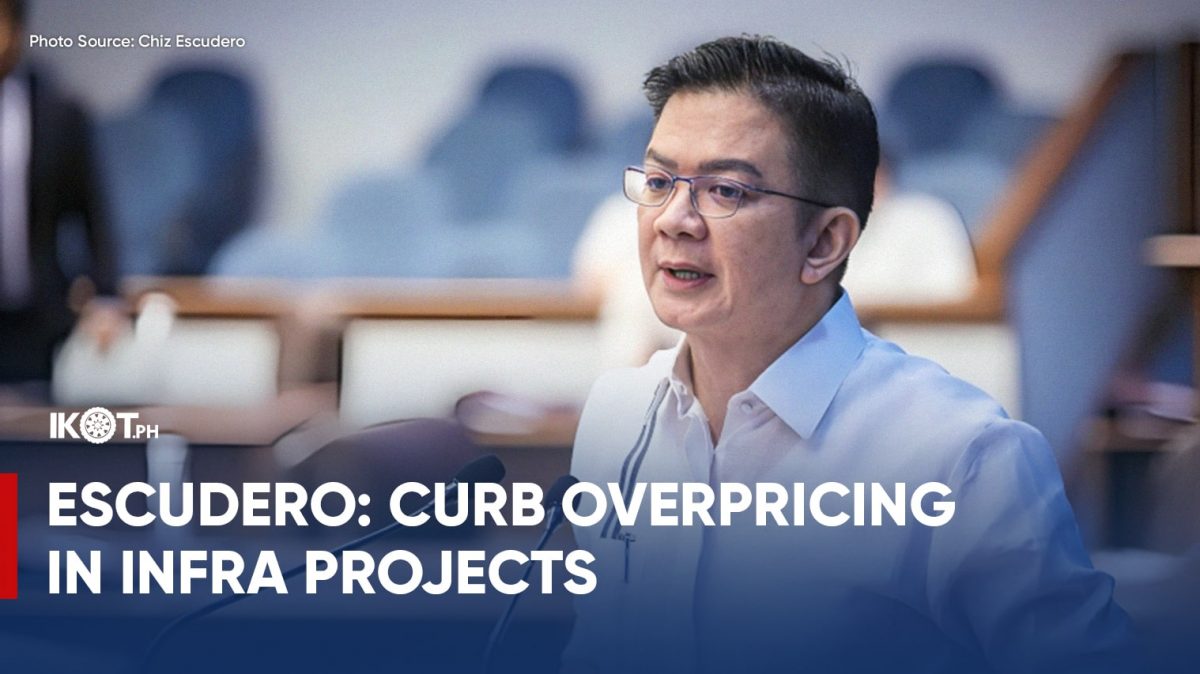In response to President Ferdinand Marcos Jr.’s call to slash construction costs and institutionalize reforms within the Department of Public Works and Highways (DPWH), Senator Chiz Escudero has filed a measure that aims to standardize the budgeting process for infrastructure projects and curb overpricing.
The proposed reform builds on the President’s directive to reduce material costs by 50% and make permanent the transparency efforts initiated by DPWH Secretary Vince Dizon.
Senate Bill No. 1467 introduces a Detailed Unit Price Analysis (DUPA) system to ensure that appropriations reflect actual market costs and are backed by clear, technical documentation.
In a formal letter, Escudero sent a copy of the bill to Senator Win Gatchalian, Chairperson of the Committee on Finance, urging its consideration during the deliberations for the 2026 national budget. The veteran legislator emphasized that the DUPA requirement should be a condition for the inclusion of any infrastructure project in the National Expenditure Program and the release of public funds.
“Hindi puwedeng tantiyahan lang ang halaga ng proyekto. Dapat may batayan, may detalye, at may pananagutan,” the seasoned lawmaker pointed out.
“Kapag malinaw ang presyo ng bawat pako, semento, at serbisyo, mas nagiging tapat ang paggastos ng gobyerno.”
“Kapag malinaw ang presyo ng bawat pako, semento, at serbisyo, mas nagiging tapat ang paggastos ng gobyerno. Mas nakikita ng taumbayan kung saan napupunta ang bawat piso,” the senator added.
He emphasized the urgency of reform, citing that for Fiscal Year 2026, the public sector infrastructure budget will reach P1.56 trillion or nearly 23% of the total national expenditure.
“Despite the fiscal impact of infrastructure projects, the manner by which their appropriations are determined remains arbitrary, inconsistent, and susceptible to distortion and misrepresentation,” Escudero said in the bill’s explanatory note.

He said SB 1467 directly responds to recent findings by the DPWH, which uncovered overpricing of materials such as asphalt, steel bars, and cement by up to 50%.
Escudero warned that such practices have enabled “an arbitrary yet systematic scheme where appropriations for infrastructure projects are allegedly being used as identifiers of projects reserved for favored contractors”.
Under his bill, all infrastructure projects must be backed by a DUPA, which is a detailed breakdown of labor, equipment, materials, and other expenses. This documentation will be required before any project is included in the National Expenditure Program or the General Appropriations Act, and before any procurement or fund release can proceed.
The bill also mandates the creation of a national reference manual, to be updated every three years, and a capacity-building program for engineers, budget officers, and auditors. These tools aim to ensure consistency in cost estimation and strengthen institutional safeguards against inefficiency and corruption.
“This measure can deter unscrupulous budget practices, promote fiscal discipline, and create fiscal space for other priority programs and projects.”
“By establishing this uniform and transparent method of estimating appropriations, this measure can deter unscrupulous budget practices, promote fiscal discipline, create fiscal space for other priority programs and projects and provide technical and financial safeguards against corrupt and inefficiencies in public spending,” Escudero said.
Public officials who knowingly falsify or omit DUPA data will face perpetual disqualification from holding public office, in addition to other civil, criminal, or administrative penalties. For Fiscal Year 2026, the bill’s provisions will apply to infrastructure projects of key national agencies, including the Departments of Agriculture, Education, Health, and Public Works, among others.
“Ultimately,” he stressed, “this intervention will serve as a vital mechanism in strengthening public trust in the processes and institutions of government, grounded on the principle that every peso spent by the people should be translated into tangible outcomes for the benefit of the public.”



